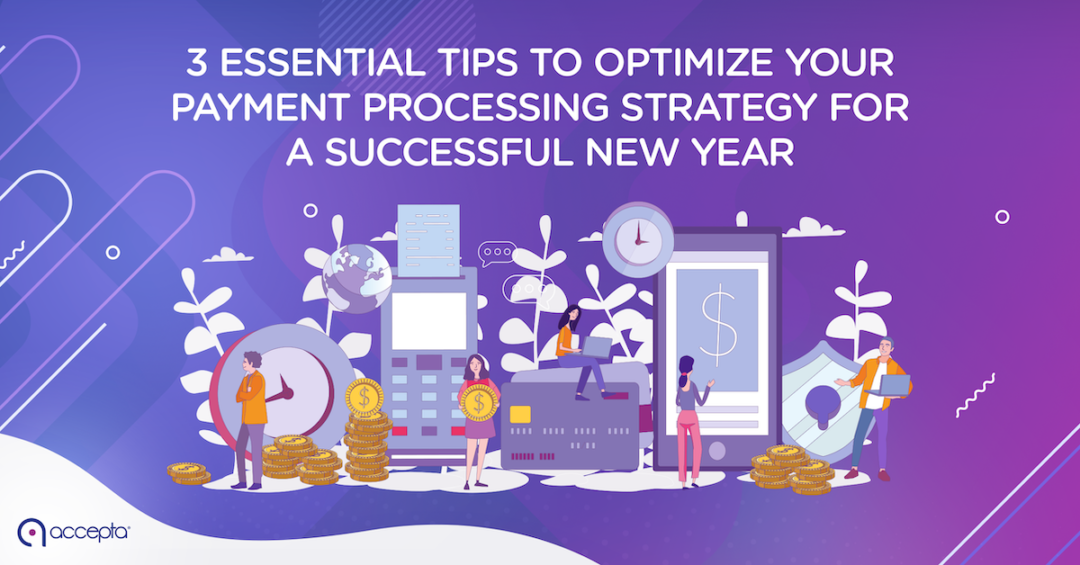In this article, we offer 3 tips to improve your payment processing strategy:
- Choose the best payment system for your business.
- Offer a variety of payment methods.
- Learn about different types of credit card fraud.
![Whether you run a small business or a large-scale venture, a solid payment processing strategy is important for achieving overall success. Using lower quality payment processing systems or lacking a fundamental understanding of how these systems should work often causes businesses to struggle to meet their goals. In fact, this can even have disastrous effects on the business’s growth in the long term. In this article, we offer 3 tips to improve your payment processing strategy: 1. Choose the best payment system for your business. 2. Offer a variety of payment methods. 3. Learn about different types of credit card fraud. [Converted] Whether you run a small business or a large-scale venture, a solid payment processing strategy is important for achieving overall success. Using lower quality payment processing systems or lacking a fundamental understanding of how these systems should work often causes businesses to struggle to meet their goals. In fact, this can even have disastrous effects on the business’s growth in the long term. In this article, we offer 3 tips to improve your payment processing strategy: 1. Choose the best payment system for your business. 2. Offer a variety of payment methods. 3. Learn about different types of credit card fraud.](https://acceptapayments.com/wp-content/uploads/2022/12/shutterstock_345076802-Converted.png)
- Choose the best payment system for your business
- Is it intuitive? The payment processing solution should be simple and easy to use with only minimal training.
- Is it customizable? Make sure the solution you are considering is customizable, whether through software or hardware, and can adapt to the specific needs of your business.
- Is it portable? The solution should be able to process transactions from where your customers are, either in person or online. These can be wireless POS systems or online payment platforms.
- Offer a variety of payment methods.
- Credit/debit. Regardless of whether you conduct transactions in person or online, these are the base payment methods that your system should offer.
- EMV chips. Referring to EuroPay, MasterCard, and Visa, these chips are standard on new payment cards and need an EMV chip reader to function.
- Contactless payment. This payment method uses NFC, or near-field communication, to read debit/credit cards without the customer swiping or inserting their card into the reader.
- Split checks. For restaurants and bars, having the ability to split checks among customers is crucial for a higher rate of returning patrons.
- Learn About Different Types of Credit Card Fraud
- Identity theft. This is the most common type of payment fraud, and involves using a victim’s information to commit additional types of fraud. Your payment processor should be capable of verifying a customer’s identity, as well as preventing the identities of other customers from being stolen.
- Credit card tumbling. With credit card tumbling, scammers will randomize credit card numbers, and use online transaction forms to test them. It may affect your business if random users attempt many suspicious small transactions.
- Refund fraud. This type of fraud involves taking a stolen credit card, making a purchase through a business, and canceling the payment. They then make a call to their victim’s bank posing as them and collect the refund from their victim’s account. If your business falls victim to refund fraud, you may be charged hefty fees as a result.
Before selecting a payment processing solution for your business, there are a few factors to consider. You’ll need to make sure it has the appropriate quality and features to garner the results your business needs. Ask yourself the following questions:
Remember to consider how seamlessly the new system can integrate with the software, hardware, or services you already have available.
If you have to use too many tools to communicate between your website/cart, data reporting tools, employee management systems, and more, it could become an operational nightmare. The point of rethinking your payment processing strategy is to ensure smooth operations with better results.
Considering how much payment processing technology has advanced in recent years, you will need an adaptable system that can withstand the test of time, and put customer preference and convenience first.
The security needs of your business are an immensely important factor in selecting the right payment processor. You’ll need a reliable partner that offers plenty of fraud protection features.
Keep in mind that you may be at greater risk of certain fraud types than others, and this may wholly depend on your business model. Review these common fraud schemes and consider how they can affect your business:
Having seen three of the most frequent payment frauds it’s time to ask the question: How do payment processors address and prevent these issues?
- Two-factor authentication. This method of authentication requests an additional method of verification from customers, generally by responding to an SMS or email.
- Card verification codes. Most cards include a three or four-digit verification code (CVV), which is requested during online transactions as a form of authentication.
- Minimum transaction limits. Having a transaction limit is particularly helpful in preventing tumbling from occurring.
- EMV chips. EMV chip readers keep card data safe from hacking, and are an excellent way of providing your customers the reassurance they need for in-person transactions.
Ensuring a strong, optimized payment processing strategy for your business is well worth the effort, and these tips are here to help you find the best solution for your needs.
Accepta offers a variety of payment processing tools and platforms that can help strengthen your business model. Contact us for more information: (787) 774-1555 or visit acceptapayments.com

